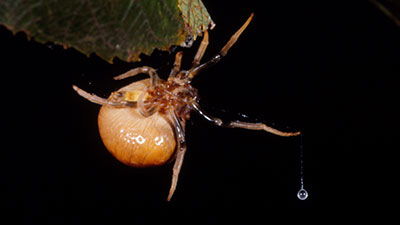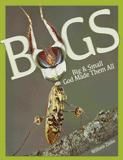
Recent Amber Fossil Finds
Two recent amber fossil finds, one in Myanmar (Burma) and the other in Lebanon, have revealed some very interesting examples of similarities between fossil and extant forms, both in morphology and in lifestyle/behavior. While there are some physical differences between the fossil forms and extant ones, these are easily explained by variations within the biblical kinds, especially since these two studies are mainly focused on Orders of arthropods and insects (which are probably above the level of the kind if there is a lot of disparity in the Order). This is an area in which baraminology studies have been scant. Where the Family, Genus, or species of the specimens is determined there appears to be remarkable similarity between the supposedly 130–99 million-year-old fossil forms and extant ones.
Lebanese Lacewings
The first fossil discovery we’ll discuss came from Lebanon, and the amber (and fossil contents) is conventionally dated at 130 MY. This amber find was covered in the journal Palaeontology.1 The paper detailed a find of green lacewing larvae and some of their egg cases which had been preserved in amber. Green lacewings (Family Chrysopidae) are comprised of dozens of genera grouped into three subfamilies. Unlike existing lacewing larvae, however, these larvae had elongated setose dorsal tubercles.2 It was due to these larval features that the new genus and species, Tragichrysa ovoruptora, discovered in this amber deposit were not assigned to the family Chrysopidae, but instead were left uncategorized at the Superfamily level of Chrysopoidea.3 However, there are several green lacewings which do have larvae with only slightly shorter and less bristly versions of these tubercules, most notably those in the subfamily Chrysopinae and in particular the Leucochrysini tribe.4
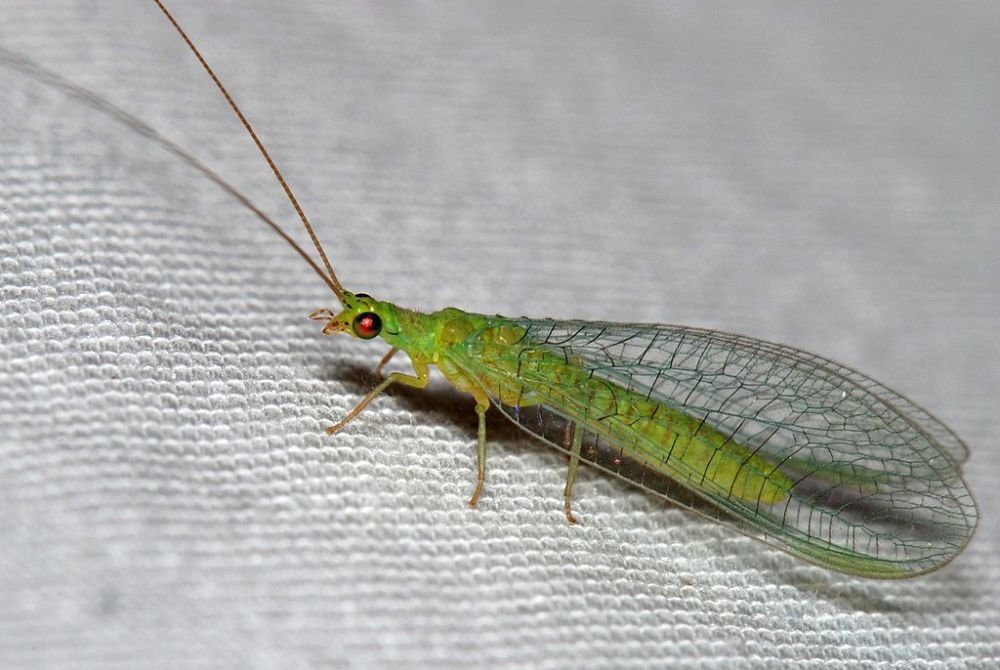
Green lacewing. Image by LeónHormiga, via Wikimedia Commons.
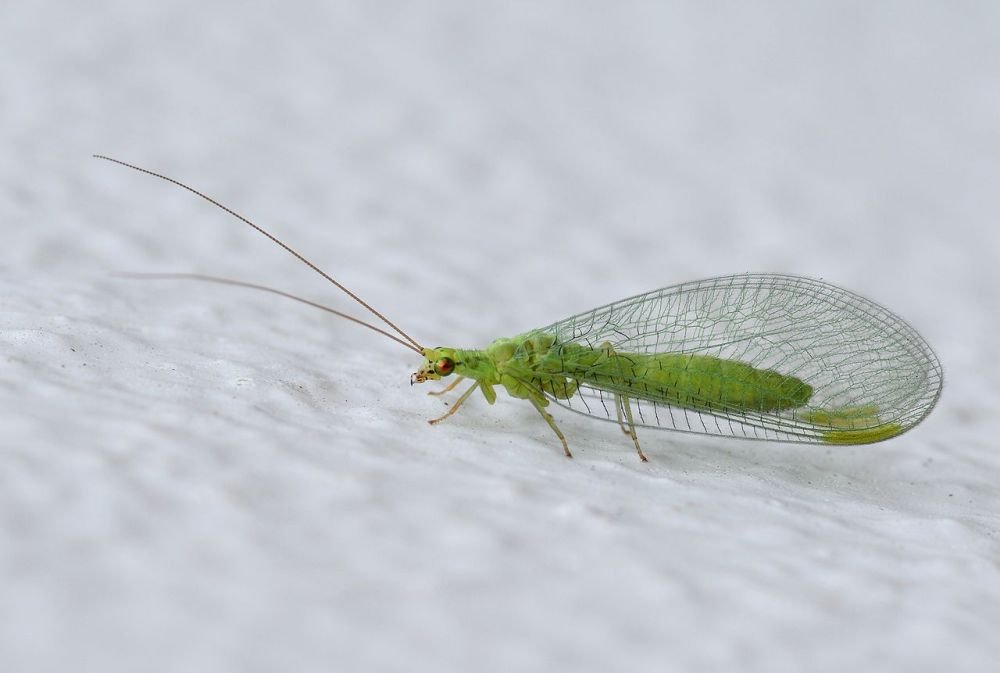
Green lacewing. Image by Alvesgaspar, via Wikimedia Commons.
The Tragichrysa ovoruptora larvae preserved in the Lebanese amber had an interesting hatching mechanism, and one which is shared with extant green lacewings. It had an egg-burster (hereafter called EB), an embryonic structure which, once used, is discarded by the organism, usually inside the egg from which it hatched. Three of these EBs (a triangular-shaped and serrated piece of chitin) were found inside the eggs from which the larvae hatched, and even the orientation of the slit they made (vertically, from the top of the egg to the middle) can be determined in the clear amber inclusion in which they were entombed. This same type (and same shape) of embryonic structure is utilized by modern green lacewing larvae; even the slit in the egg from hatching larvae is the same.5 There are several different types of EBs in the insect world, and many insect larvae do not have them at all. This makes sense in a creation paradigm, in which God would have designed some insects to have EBs of varying types and others to have none at all, owing to challenges of different larval body types, egg strength, neonate (hatchling) morphology, and strength, habitat/environment, and so forth. In fact, the researchers admit that this variety is somewhat puzzling in an evolutionary view, yet this is something which creation science would more readily account for. Note this secular researcher’s comment on how the morphology of EBs and even the anatomical location of them seem to be fairly consistent at the Family level:
The characteristics of the EBs are not as evolutionarily conservative as one would anticipate because of the key ontogenetic role that they play. First, the morphological disparity of EBs is remarkable, and includes piercing or tearing structures, cutting or serrating edges or even bursting eversible membranes. Moreover, EBs have diverse embryonic origins and different anatomical locations within the metazoan head, different appendages or the body. Generally speaking, the morphology and, above all, the location of the EBs (when present) tend to be consistent within groups that are often equivalent to the family rank. However, the hatching mechanism can be drastically different between closely-related lineages, namely entailing the loss of the EB.6
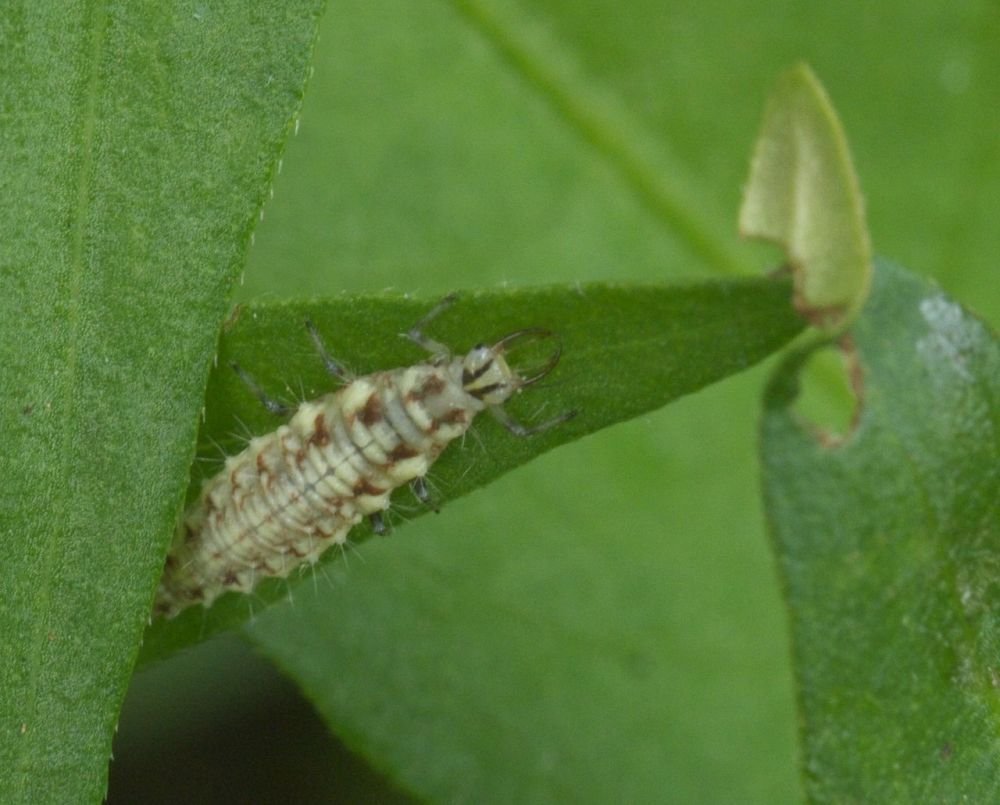
Green lacewing larva. Image by LeónHormiga, via Wikimedia Commons.
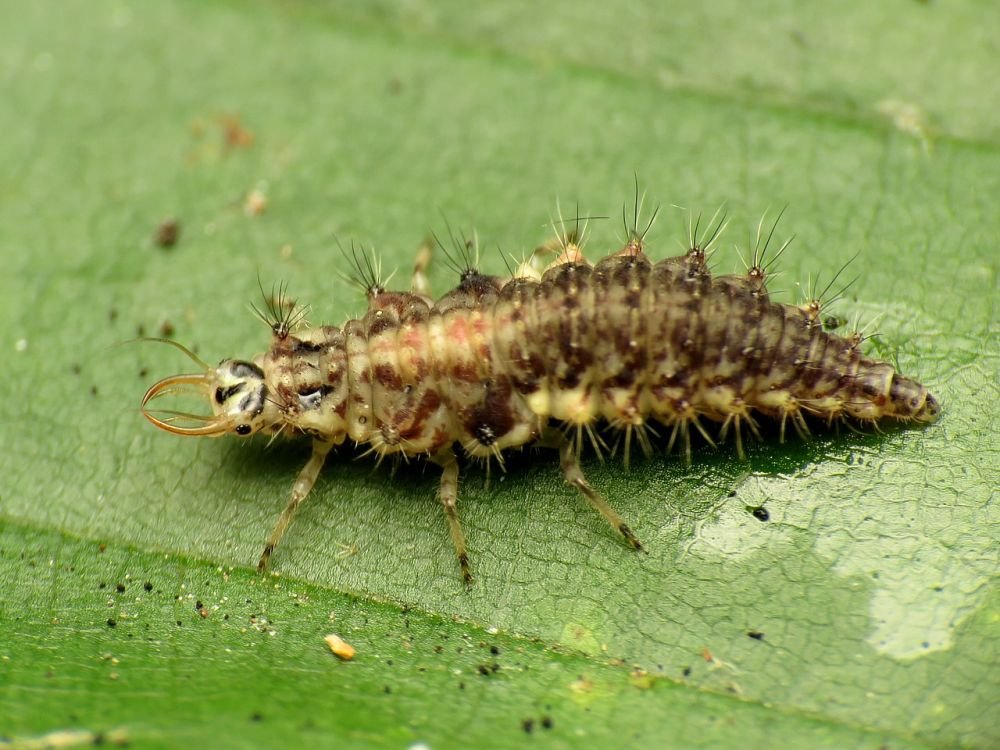
Green lacewing larva. Image by Xpda, via Wikimedia Commons.
The Lebanese amber fossil deposit also demonstrates the instantaneous nature of the fossilization of these lacewings and the surprising similarity between the extinct and the modern green lacewings across supposedly 130 MY of evolution, as acknowledged by the paper’s authors.
The present fossil assemblage corresponds to a recently hatched egg lay. Indeed, the morphological and taphonomic data noted above indicates that the neonates of Tragichrysa ovoruptora were caught together by resin while clutching the eggs from whence they had freshly emerged.7
In addition to noting that the fossil assemblage looks very much like extant lacewing egg clutches, they also note that even the position of the “escape” slit made in the eggs resembles modern green lacewing hatchlings. Yet despite the similarities between the fossil forms and existing green lacewings, the authors, due to evolutionary presuppositions, have to fall back on evolutionary stasis as the explanation:
The preservation as syninclusions [several specimens in the same piece of amber] of conspecific [same species] neonates, longitudinally split chorions [egg cases], and serrated EBs bearing a short anterior process represents direct evidence of the late embryos of T. ovoruptora hatching from the egg through a slit cut from the micropylar region to the egg equator by acephalic (labial) EB, as occurs in extant green lacewings. It is exceedingly rare to find direct fossil evidence of an early developmental event, particularly one as ephemeral and key as the transition from embryonic to post-embryonic life. This finding demonstrates ac. 130-million-year-old stasis in the embryo hatching mechanism in the lineage of green lacewings (Chrysopoidea) and proves the considerable ontogenetic and ethological conservatism to which some embryonic features related to hatching have been subject to, at least in insects. Conservatism is usually the result of long-term stability in local habitats but this would not be the case for green lacewings. Instead, such bradytely [extremely slow or arrested rate of evolution] may reflect the early evolution of a successful life strategy not being altered in the succeeding eons.8
It appears that green lacewings were (and are) designed to do what they do, and they do it well enough not to have to changed much—being widespread throughout all continents except Antarctica.9 Creation scientists would expect to see little change morphologically or behaviorally, since these particular insects are ones that were entombed in the late stages of the Flood only about 4,350 years ago. But 130 million years of evolutionary stasis strains credulity. Even without much selection, genetic drift would be expected to generate more change than that over the course of 130 million years. In fact, evolutionary stasis (evolution that stays the same) is oxymoronic. Stasis is not an obvious prediction of evolutionary theory; it is an ad hoc “Just So Story” to explain any unanticipated lack of change. It is much more in line with creationist predictions of variations within a kind.
Burmese Millipedes
Another amber fossil find was the one discovered in Myanmar (formerly Burma) and documented in a recent ScienceDaily article10 and published in the journal Checklist.11 The researchers document finding 527 specimens of millipede and 22 specimens of centipede as well as a few other arthropods (but we will only discuss the millipede specimens in this paper). This rather large number of specimens all came from the Noije Bum amber mine in northern Myanmar but had found their way to four private collections and one museum collection in Germany.12 We’ve written on the extensive amber deposits in Myanmar in 2014 and 2017, both of those news articles focusing on amber found in the same region as the finds covered in this article (Hukawng Valley).
Apart from the sheer number of millipedes and centipedes found in this amber mine, their preservation in most cases is exquisite.
Apart from the sheer number of millipedes and centipedes found in this amber mine, their preservation in most cases is exquisite (although there are a few fragmented finds as well). The amber is very light yellow or even clear in color and almost completely transparent. This helped the authors identify many of the specimens. The amber in this region is conventionally dated at 99 MY.
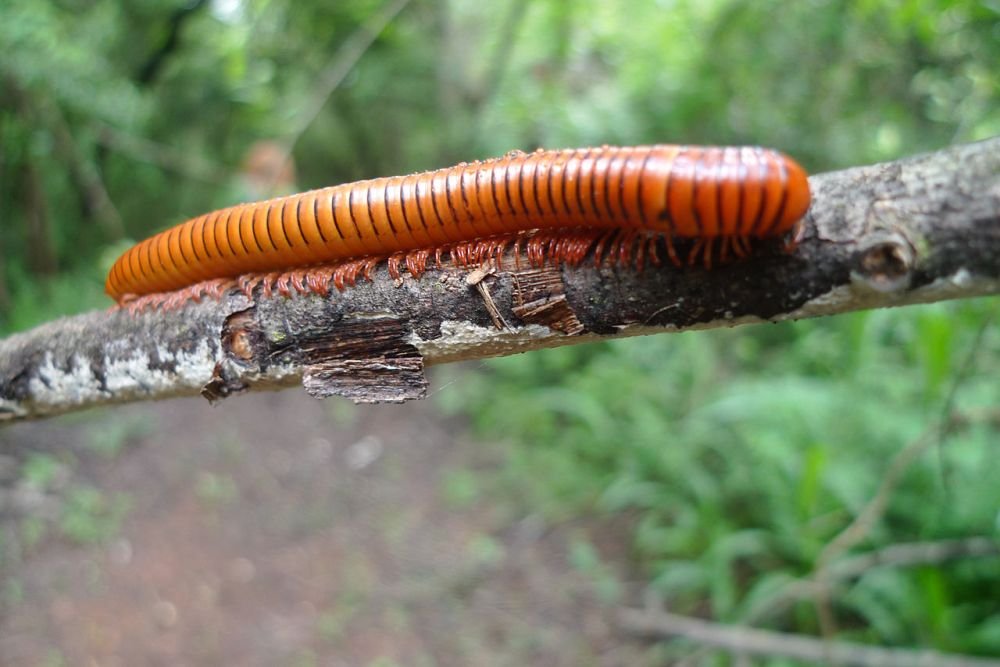
Doratogonus. Image by Terrible Tim, via Wikimedia Commons.
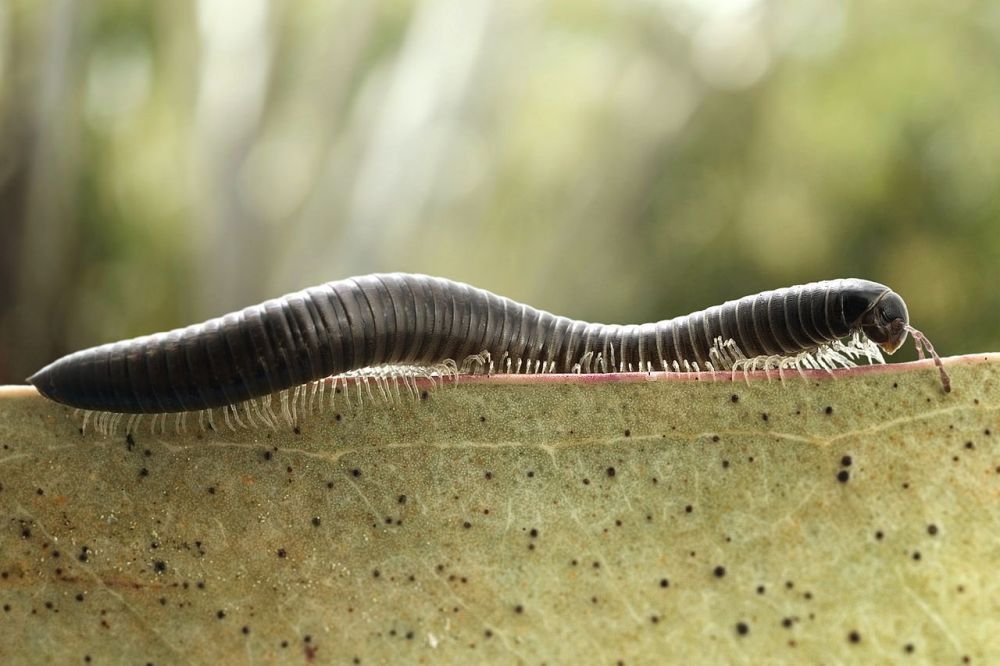
Black Portuguese Millipede (Ommatoiulus moreletii). Image by CSIRO, via Wikimedia Commons.
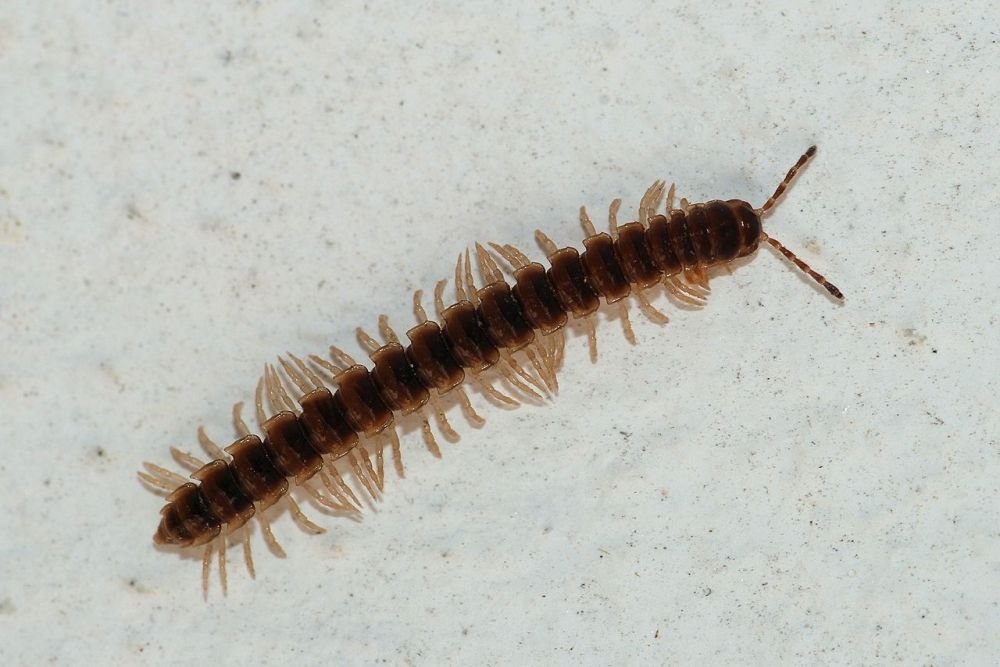
Oxidus gracilis. Image by Alvesgaspar, via Wikimedia Commons.
Millipedes are of the Class Diplopoda. In some cases the authors were able to determine the animal in question to the Family level, but in many cases only to the Order level of classification. Part of this is due to many families being delineated solely by examining male sex organs (which cannot be done in an encased specimen). This is especially true of millipedes, as the authors state (quote below). However, the authors’ appeal to convergent evolution to explain away similarities between allegedly 99 million year old fossils and living millipedes seems out of place when the animals in question would be of the same Order, and even in an evolutionary paradigm would be closely related. In creation baraminology, it is possible that millipede kinds might be on the Order level, as there is not much disparity within the Orders. In fact there seems to be an unnecessary emphasis on “splitting” rather than “lumping” based on minor or negligible morphological differences.
According to the study’s authors,
As many Diplopoda families can only be securely determined by studying the male copulatory legs (gonopods or telopods), which is beyond the scope of this list, such determinations were not undertaken in the Glomerida, Polydesmida, Callipodida, Stemmiulida, Spirostreptida and Spirobolida, even if the outer appearance of the fossils might be similar to extant species, because convergent evolution cannot be ruled out, and extinct representatives could resemble morphotypes of extant but different families.13
Despite the researchers’inability to be able to narrowly classify the millipedes down to the Family level (though understandable in some cases), they seemed to be quite comfortable and confident of the Order (and in some cases the Family) based strictly on observable morphology. There are frequent examples of “easily identified” statements like the following:
Members of the Glomeridesmida, family Glomeridesmidae can be easily identified by the following head characteristics: the absence of ommatidia, a large Tömösváry organ which is circular.14
Members of the order Siphonophorida can be easily identified based on the beak-like projection of the head, the absence of eyes, as well as the absence of a dorsal suture.15
Members of the family Siphonophoridae can be easily identified based on the head characteristics: the antennae is straight, with large sensory pits on the antennomeres 5 and 6. The antennomere 2 is as long as the others.16
Chordeumatida can be identified based on the presence of 25–31 tergites with a dorsal suture, an anal segment carrying 4 spinnerets, and tergites with 3+3 characteristic macrosetae.17
Members of the order Callipodida have a characteristic habitus, the head has numerous ommatidia, the segments are cylindrical, with free sternites, lacking a dorsal suture. The telson is carrying spinnerets.18
As can be seen by the statements above, the morphology of many of the millipede orders (and some families) are readily identifiable, and if the researchers were able to see the gonopods or telopods, they could make determinations down to the Family and in some cases possibly down to the Genus level. In many cases, despite their convergent evolution escape hatch, had they had access to these structures, they would identify these “99 MY old specimens” based on both fossil and existing millipede families. In fact, one exceptional specimen allowed just such an identification:19
This 1 specimen among the numerous samples of Spirostreptida differs from the others in the absence of frontal setae on the head, in being more similar to recent Cambalidea. The specimen has the gonopods visible, showing anterior gonopods with a flagella and allowing us to place this specimen in a recent family, the Cambalidae.20
From a creation perspective, the important aspects of this particular amber fossil find are the exceptional preservation, the commonality between supposedly 99 MY old fossils and their living relatives, and the catastrophic processes which entombed so many organisms. Of the 16 Orders of millipedes existing today, 13 were represented in this amber find (and 4 of the 5 living centipede orders were found as well).21 Far from being examples of evolutionary stasis, these fossils testify to the wisdom and power of God in creating many diverse kinds, all of which manifest amazing complexity and adaptability, while also maintaining the characteristics of each kind. Also, their well-preserved entombment in amber testifies to the judgement of God upon the entire earth during the time of Noah.
Far from being examples of evolutionary stasis, these fossils testify to the wisdom and power of God in creating many diverse kinds.
Millipedes in particular are detritus/littoral forest floor denizens, who clean up organic material waste and plant litter. They serve plants, animals, and man by breaking down dead plant material and rejuvenating the soil. Some millipedes in a post-fall world are carnivorous, but most are not. They were designed for a specific function and are a necessary component of keeping our world cleaner. It is no wonder that little change is needed from their pre-flood to post-flood varieties. These pre-flood fossil millipedes and their post-flood living relatives testify to the wisdom and ecological care of this earth by the Creator, Jesus Christ (Colossians 1:16–17).
Footnotes
- Ricardo Pérez‐de la Fuente et. al., “The Hatching Mechanism of 130‐Million‐Year‐Old Insects: An Association of Neonates, Egg Shells and Egg Bursters in Lebanese Amber,” Palaeontology (December 20, 2018): 1–13, doi:10.1111/pala.12414.
- Setose dorsal tubercles are long, bristly but hollow tubes on the backs of the larvae.
- Pérez‐de la Fuente et. al., “The Hatching Mechanism of 130‐Million‐Year‐Old Insects.”
- Catherine A. Tauber et al., “A New Genus and Species of Green Lacewings from Brazil (Neuroptera: Chrysopidae: Leucochrysini),” Annals of the Entomological Society of America 101, no. 2 (March 2008):314–326, https://academic.oup.com/aesa/article/101/2/314/8446.
- Pérez‐de la Fuente et. al, “The Hatching Mechanism of 130‐Million‐Year‐Old Insects,” 10.
- Ibid.
- Ibid., 11.
- Ibid.
- “Neuroptera (Lacewings, Antlions) (Insects),” What-When-How (accessed January 9, 2019), http://what-when-how.com/insects/neuroptera-lacewings-antlions-insects/.
- Pensoft Publishers, “450 Fossilized Millipedes Found in 100-Million-Year-Old Amber,” ScienceDaily (accessed January 9, 2019), https://www.sciencedaily.com/releases/2018/12/181219115600.htm.
- Thomas Wesener and Leif Moritz, “Checklist of the Myriapoda in Cretaceous Burmese Amber and a Correction of the Myriapoda Identified by Zhang (2017),” CheckList 14, no. 6 (December 17, 2018): 1131–1140, doi:10.15560/14.6.1131.
- Ibid., 1132.
- Ibid.
- Ibid., 1133.
- Ibid., 1134.
- Ibid.
- Ibid., 1135.
- Ibid., 1136.
- Compare their description below to the Cambalidae Genus Cambala description here: Nell B. Causey, “New Cavernicolous Millipeds of the Family Cambalidae (Cambaliclea: Spirostreptida) from Texas (U.S.A.) and Mexico,” International Journal of Speleology 1, no. 1 (2018): 238, http://paperity.org/p/83208900/new-cavernicolous-millipeds-of-the-family-cambalidae-cambalidea-spirostreptida-from-texas.
- Wesener and Moritz, “Checklist of the Myriapoda,” 1136.
- Ibid., 1131.
Recommended Resources

Answers in Genesis is an apologetics ministry, dedicated to helping Christians defend their faith and proclaim the good news of Jesus Christ.
- Customer Service 800.778.3390
- © 2024 Answers in Genesis

